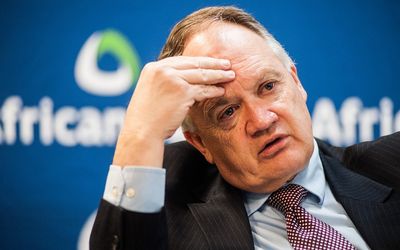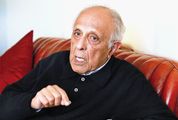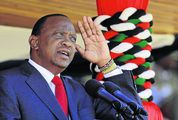WHEN African Bank went into curatorship in August 2014, curator Thomas Winterboer expected that he would be back in his office at PwC by March last year.
That was not to be, with the process coming up against legislative hurdles, as well as challenges from investors and black empowerment shareholders.
But those hurdles have been overcome, and with bondholders approving the deal, and the finance minister approving a new banking licence, the way was finally cleared last week for the "Good Bank" to come out of curatorship and begin life, as it will do next month as a new, licensed bank.
The "Bad Bank", now called Residual Debt Services, will remain under curatorship for some years.
It might not surprise anyone to hear that the new, "Good Bank" will be called African Bank, but that was by no means a given — the bank’s CEO designate Brian Riley said at a media briefing last week that his team had established that the African Bank brand still resonated with customers, with 150,000 customers coming through the bank’s doors each month, 1.5-million customers who are "paying us", and a 27% increase in sales for the year to date, after the bank met its R8bn sales target for the 2015 financial year.
The African Bank brand will take much longer to recover its credibility with investors and funders. The bank has two to three years in which to do that, building a business that will enable it to wean itself off support by 2018, and possibly seek a JSE listing.
A condition of its banking licence is that African Bank can no longer be a "monoline" bank, focused on providing unsecured credit. The newly licensed bank now has to diversify, and under Mr Riley, the former Wesbank CEO who joined the curator’s office in May last year to run the "Good Bank", the bank’s management team has devised a new strategy that will focus, he says, on creating value for customers.
African Bank’s funeral insurance product was lost when African Bank Investment Holdings’ empowerment shareholders blocked the acquisition of insurance arm Stangen, so the new bank is developing a new funeral policy with Guardrisk, which it plans to launch in May-June, and which Mr Riley says will demonstrate "how we see value in a product". It is also working on a new stokvel and other products, and will partner with Sanlam on a pilot project, initially in two African Bank branches, to sell a range of life products.
Most significantly, perhaps, the new African Bank will venture into transactional banking, launching two to three transactional products next year.
The bank will not be building its own transactional platforms, Mr Riley emphasises, because of the expense and time that would require, but will instead be doing this with an as yet unnamed partner — it has looked at six vendors.
Persuading customers to place their salaries in African Bank and transact through the bank is important to enable the bank to start building a retail deposit base that will make it less dependent on bond market and other institutional funding, as well as enhancing its knowledge customers. But it will put the bank directly in competition with rivals, such as Capitec and the big banks.
That is a little complicated because those banks are shareholders in the "Good Bank", as agreed back in August 2014 when the plan to separate the failed African Bank into good and bad banks was devised.
The "Good Bank" is capitalised at R10bn, of which the Reserve Bank has put in R5bn of equity capital, the Public Investment Corporation, on behalf of the Government Employees Pension Fund, a further R2.5bn, and six banks — the big four plus Investec and Capitec — have put in the other R2.5bn. The banks will not have access to any information that is not in the public domain and will not sit on the board, chaired by former Absa executive Louis von Zeuner, and which has been approved by the regulator.
Under curatorship, the bank has been rightsized and streamlined, with staff numbers reduced 21%, from 5,618 to 4,391. Crucially, its credit-granting criteria have been completely revised and tightened up — ironically, in line with a new scorecard that the management of the old African Bank had introduced just before it went into curatorship. That scorecard was used as the objective basis on which clients of the good and bad banks were divided.
In total, the good and bad bank have 3-million customers, and the "Good Bank" is collecting the whole book, with collections processes that have been much improved in the past 18 months.

African Bank curator Tom Winterboer. Picture: MARTIN RHODES
WHEN African Bank went into curatorship in August 2014, curator Thomas Winterboer expected that he would be back in his office at PwC by March last year.
That was not to be, with the process coming up against legislative hurdles, as well as challenges from investors and black empowerment shareholders.
But those hurdles have been overcome, and with bondholders approving the deal, and the finance minister approving a new banking licence, the way was finally cleared last week for the "Good Bank" to come out of curatorship and begin life, as it will do next month as a new, licensed bank.
The "Bad Bank", now called Residual Debt Services, will remain under curatorship for some years.
It might not surprise anyone to hear that the new, "Good Bank" will be called African Bank, but that was by no means a given — the bank’s CEO designate Brian Riley said at a media briefing last week that his team had established that the African Bank brand still resonated with customers, with 150,000 customers coming through the bank’s doors each month, 1.5-million customers who are "paying us", and a 27% increase in sales for the year to date, after the bank met its R8bn sales target for the 2015 financial year.
The African Bank brand will take much longer to recover its credibility with investors and funders. The bank has two to three years in which to do that, building a business that will enable it to wean itself off support by 2018, and possibly seek a JSE listing.
A condition of its banking licence is that African Bank can no longer be a "monoline" bank, focused on providing unsecured credit. The newly licensed bank now has to diversify, and under Mr Riley, the former Wesbank CEO who joined the curator’s office in May last year to run the "Good Bank", the bank’s management team has devised a new strategy that will focus, he says, on creating value for customers.
African Bank’s funeral insurance product was lost when African Bank Investment Holdings’ empowerment shareholders blocked the acquisition of insurance arm Stangen, so the new bank is developing a new funeral policy with Guardrisk, which it plans to launch in May-June, and which Mr Riley says will demonstrate "how we see value in a product". It is also working on a new stokvel and other products, and will partner with Sanlam on a pilot project, initially in two African Bank branches, to sell a range of life products.
Most significantly, perhaps, the new African Bank will venture into transactional banking, launching two to three transactional products next year.
The bank will not be building its own transactional platforms, Mr Riley emphasises, because of the expense and time that would require, but will instead be doing this with an as yet unnamed partner — it has looked at six vendors.
Persuading customers to place their salaries in African Bank and transact through the bank is important to enable the bank to start building a retail deposit base that will make it less dependent on bond market and other institutional funding, as well as enhancing its knowledge customers. But it will put the bank directly in competition with rivals, such as Capitec and the big banks.
That is a little complicated because those banks are shareholders in the "Good Bank", as agreed back in August 2014 when the plan to separate the failed African Bank into good and bad banks was devised.
The "Good Bank" is capitalised at R10bn, of which the Reserve Bank has put in R5bn of equity capital, the Public Investment Corporation, on behalf of the Government Employees Pension Fund, a further R2.5bn, and six banks — the big four plus Investec and Capitec — have put in the other R2.5bn. The banks will not have access to any information that is not in the public domain and will not sit on the board, chaired by former Absa executive Louis von Zeuner, and which has been approved by the regulator.
Under curatorship, the bank has been rightsized and streamlined, with staff numbers reduced 21%, from 5,618 to 4,391. Crucially, its credit-granting criteria have been completely revised and tightened up — ironically, in line with a new scorecard that the management of the old African Bank had introduced just before it went into curatorship. That scorecard was used as the objective basis on which clients of the good and bad banks were divided.
In total, the good and bad bank have 3-million customers, and the "Good Bank" is collecting the whole book, with collections processes that have been much improved in the past 18 months.























Change: -1.27%
Change: -1.42%
Change: -1.87%
Change: -1.08%
Change: -2.01%
Data supplied by Profile Data
Change: -0.47%
Change: 0.61%
Change: -1.27%
Change: 0.00%
Change: 0.63%
Data supplied by Profile Data
Change: -0.12%
Change: -1.22%
Change: -0.17%
Change: 0.54%
Change: 0.00%
Data supplied by Profile Data
Change: -0.84%
Change: -1.85%
Change: -2.59%
Change: 0.36%
Change: -2.35%
Data supplied by Profile Data